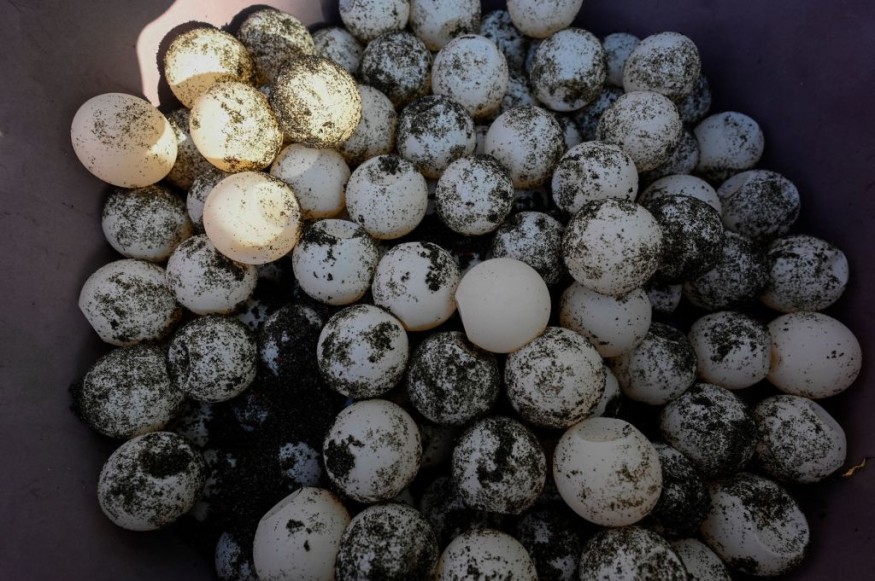
A recent study found that female turtles are even more productive in warm temperatures, in addition to generating more hatchlings that will turn out to be females overall.
More Fertile Female Turtle Hatchlings
However, a recent study from Duke University reveals that those females also have a higher capacity for egg production, even before their gender is decided.
It is well known that warmer temperatures cause more turtle eggs to hatch into female hatchlings.
This discovery may help to explain why temperature-dependent sex determination is a trait shared by many species besides turtles and why the system has survived despite first appearing to be a dangerous tactic.
It could offer a frightening preview of what a warmer planet can bring.
The scientists discovered that greater incubation temperatures increase the amount of "germ cells" or pre-eggs that an embryo carries.
They discovered that those germ cells themselves contribute to the embryo's gender.
It's not the only process, according to Blanche Capel, a distinguished professor of Cell Biology at the Duke School of Medicine.
Through a variety of cell types in the embryo, higher temperatures appear to have a cumulative impact on how sex is determined.
The study's senior author is Capel.
Boris Tezak, a postdoctoral researcher who oversaw this investigation, claimed that the more numerous germ cells themselves appear to be the driving force for feminization.
He claimed that the same temperatures that generate females also increase the number of germ cells.
Other Temperature-Sensitive Species
According to Capel, more germ cells are known to regulate the development of fish females.
However, scientists took some germ cells out of red-eared slider embryos grown at an intermediate temperature that was expected to produce a 50-50 split and found more males than predicted to demonstrate the argument that more germ cells result in female turtles.
Since it appears to have evolved several times in diverse ways, scientists have long known about temperature-dependent sexual development and have discovered it in many distinct regions of the Tree of Life, according to Tech Explorist.
The study team hypothesizes that this is due to the reproductive advantage that temperature-dependent sex development confers.
According to Tezak, a female who hatches with more germ cells is likely to be more reproductively fit since it enhances her ability to carry more eggs.
The study team has connected the female route to the growth of germ cells; if this does make the female more fertile, this would help to explain why temperature-dependent sex development endures.
Tezak predicted that when global temperatures rise even higher, the pool of germ cells across other temperature-sensitive species groups would also be impacted, according to Tezak said.
Also Read : 2 Sea Turtle Nests in North Carolina Found Damaged, Feds Offer $1500 Reward for Arrest of Culprits
Controlled Study
Tezak meticulously raises clutches of red-eared slider eggs acquired from a breeder in Louisiana in plastic containers filled with wet medium and maintained at a steady temperature in the laboratory.
At 26 degrees Celsius, one incubator produces more males.
Another is at 31 degrees, which is the ideal temperature for increasing female reproduction.
The embryo that had been incubated warmer is noticeably bigger and more active within the egg when he removes one of each to examine their development under a very strong light.
According to Capel, the theory of the researchers is that there is a temperature "sweet spot." According to him, there is a little region where there are a lot of germ cells, and after that, the reductions begin.
Only 2.5 degrees over the ideal temperature for females, according to Tezak, they have incubated a few eggs at 33.5 degrees.
It produced some truly odd embryos, including two-headed and cyclops embryos. They haven't yet tallied their germ cells.
To carry on with the temperature trials, the team is also due to receive several alligator eggs.
In stark contrast to the red-eared slider turtle, alligators are known to spawn females at low temps and males at high temperatures.
Alligators and turtles both produce females at 31 degrees Celsius since the low temperature for alligators and the high temperature for turtles are the same.
The intriguing question, according to Tezak, is whether both species will have germ cells at this temperature, Phys Org reported.
The study by Tezak, together with Capel and several colleagues, was recently published in the journal Current Biology.
Related Article : Tennessee Aquarium Turtle Nursery Welcomes Two Critically Endangered Four-Eyed Turtle Hatchlings
© 2025 NatureWorldNews.com All rights reserved. Do not reproduce without permission.





